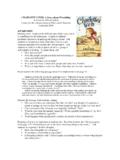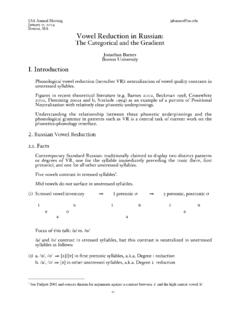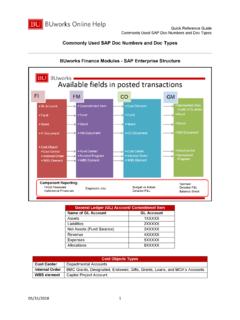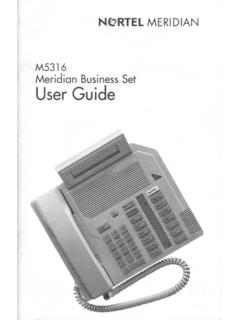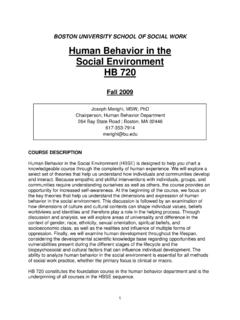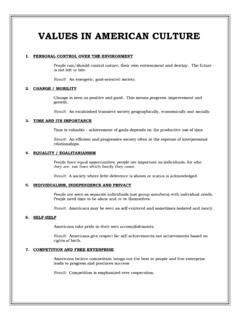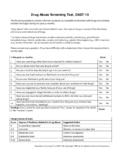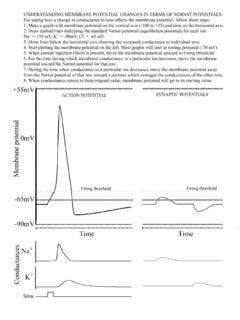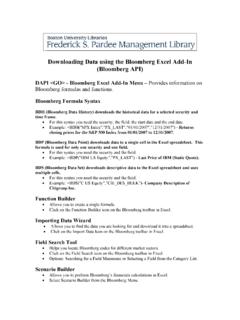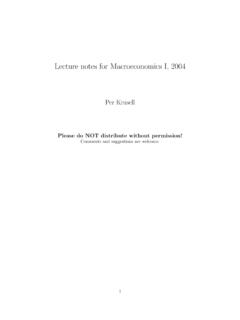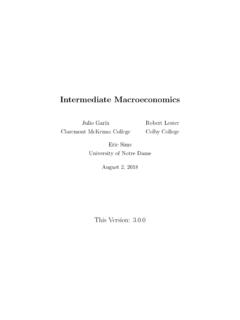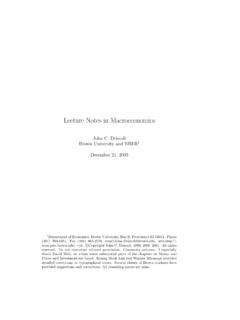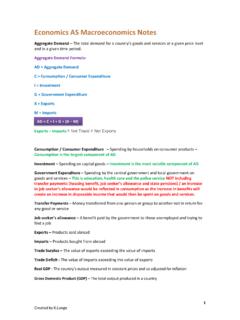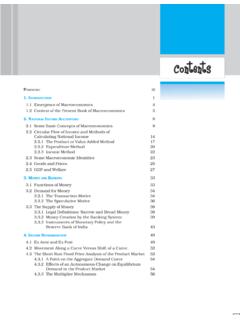Transcription of MACROECONOMICS - Boston University
1 MACROECONOMICS18801900192019401960198020 00 Matthias DoepkeUniversityofChicagoAndreas LehnertBoardofGovernorsoftheFederalReser veSystemAndrew W. ,8,9,and11 Copyrightc 1999, ,12,13,14,17,18,and19 Copyrightc 1999, ,2,3,4,6,and15 Copyrightc 1999, mechanicalmeans(including, butnot limited to, photocopying, recording,orinforma-tionstorageandretrie val) authors permit faculty, students, and staff of the University of Chicago to copy sMacroeconomics,whichis the textbook that is used in introductory MACROECONOMICS courses at the University ofChicago. In teaching these courses, we have found that Barro s treatment of the subjectdoes not make use of the mathematical skills of our students.
2 In particular, Barro reliesalmost exclusively on economic intuition and graphs to elucidate his subject. Since ourstudents are familiar with calculus, we are able to work out formal models. This have attempted to align our chapters with those in Barro s textbook. Sometimes ourchapters present mathematical versions of the models that Barro introduces in his corre-sponding chapters (as in Chapters 2 and 19). Other times, our chapters contain materialthatextendshiswork(asinChapters5 and17). Throughout,wehavetriedtoaddvaluetothetre atmentinBarro sbookandtominimizeredundancy.
3 Forexample,wehavenothingto add to Barro s Chapters 7, 16, and 20, so we have not covered those chapters. Threechaptersdeviatefromthis plan. Chapter1developsthemathematicsofinterest ratesandgrowthrates;Barrodoesnotcoverthe setopics,buttheyarebehindthescenesinhisC hap-ter 1 and throughout his book. Chapter 10, which covers unemployment, is completelyunrelatedtoBarro sChapter10. ItisintendedasacompaniontothebookJob Creation andDestructionbyDavis,Haltiwanger,andSch uh. Chapter18coverstherelationshipbetweenthe government budget constraint and inflation along the lines of the Unpleasant Mon-etarist Arithmetic of Sargentand Wallace.
4 Although Barrohas a sidebar on this topic inhisChapter14,wefeelthatitisimportanten oughtomeritachapterofitsown. WechoseChapter 18 since it is a natural point between fiscal policy (Chapters 12, 13, and 14) andmonetarypolicy(Chapter19). Barro sChapter18isareviewoftheempiricalevidenc eontheeffectofmonetaryshocksontherealeco nomy, are exercises after each chapter, and we have provided complete solutions at theendofthisbook. give students a sense of what they ought to know, since these exercises have beendrawn from several years of exams. Also, we often use exercises to introduce extensionstothe materialin thetext.
5 Wehaveattemptedtoestimatethe difficultyoftheseexercises,labeling them as Easy, Moderate , or Hard . An exercise with a Hard rating mayrequirealot ofalgebra,oritmayuseunfamiliarconcepts. Mostotherquestions areratedivPrefaceas Moderate ,unless they have one-line solutions, in which case we usually rated themas Easy .Weteachthismaterialintwoten-weekcourses . InthefirstcoursewecoverChapters1,2,3, 6, 4, 5, 7, 8, 9, and 11, in that order. This allows us to keep together all the materialonmonetary economics (Chapters4, 5, 7, and 8). In the second course, we cover Chapter 10(unemployment);Chapters12,13,and14(fis calpolicy);Chapters15and16(international macro);andChapters17,18and19(moneyandban king).
6 Sincethisisquitealottocoverin ten weeks, instructors of the second course have traditionally touched only briefly onunemployment andinternational macroandconcentratedinsteadonmonetary andfiscalpolicy. Thesecondcoursecanbenefitsubstantiallyfr omoutsidereadings,suchas:RationalExpecta tions and InflationbyThomasSargent;A Monetary History of the United StatesbyMil-tonFriedmanandAnnaSchwartz;a ndJob Creation and DestructionbyDavis,Haltiwanger, book would not have been possible without the support of the Department of Eco-nomics at the University of Chicago and the encouragement of Grace Tsiang.
7 We wouldalso like to thank the many students andfacultywho havehelpedus to developthis ma-terial. A number ofexercisesin the firsthalfof thebook werebasedon questions ,Jr. Thematerialinthesecondhalfofthisbookhasb enefitedfromsev-eralgenerationsofinstruc tors of Economics203. Inparticular,AlexanderReyfmanwrotea series of lectures which were the genesis of Chapters 12 through 19. Reyfman s teach-ing assistant Bill Dupor, and Lehnert s teaching assistants Jerry Cubbin and Tom Miles,allcontributedvaluablesuggestions. During Cubbin stenureasTA,hewrotemost ofthesolutionstotheproblemsets,andsevera lofthesehavefoundtheirwayintothisbook.
8 Allstudents subjected to early drafts of this material contributed to the book s current form;ShannonThaden,BenRuff, spite of all the comments and suggestions we have received, this book inevitably con-tainserrorsandomissions. some of the material in this book involves policy prescriptions. At some level,policy is a matter of opinion. The opinions expressed herein are not necessarily those ,IllinoisSeptember1999 ContentsPrefaceiii 1 Preliminaries GrowthRates .. 52 Work Effort, Production, and Crusoe sProductionPossibilities .. Crusoe Crusoe sChoices.
9 18 Appendix .. 193 The Behavior of Households with Markets for Commodities and 304 The Demand for 365 The Market-Clearing AGeneralPure-ExchangeEconomy .. NormalizationofPrices .. Walras 466 The Labor EquilibriumintheLaborMarket .. 528 689 Business ShocksandPropagationMechanisms .. ARealBusinessCycleModel .. Simulations .. 8110 :Notation .. 9211 Economic 10812 The Effect of Government .. 12813 The Effect of .. 148viiiContents14 The Optimal Path of Government.
10 17015 Comparative Advantage and .. 18117 Financial 20618 Fiscal and Monetary .. 22319 Optimal Monetary TheModelofLucas(1972) .. MonetaryPolicyandthePhillipsCurve .. OptimalMonetaryPolicywithoutCommitment: TheNashProblem .. 239 Solutions to Exercises243 Chapter 1 PreliminariesThischapterintroducesintere stratesandgrowthrates. Thetwotopicsarecloselyrelated,sowetreatt hemtogether. TheconceptsdiscussedherearenotinBarro, Compound InterestWe begin with some common terms and calculations from the realm of fixed-income in-vestments. Theamountoftheinvestment fixed-income fromtheinvestmentsiscalledinterest.
